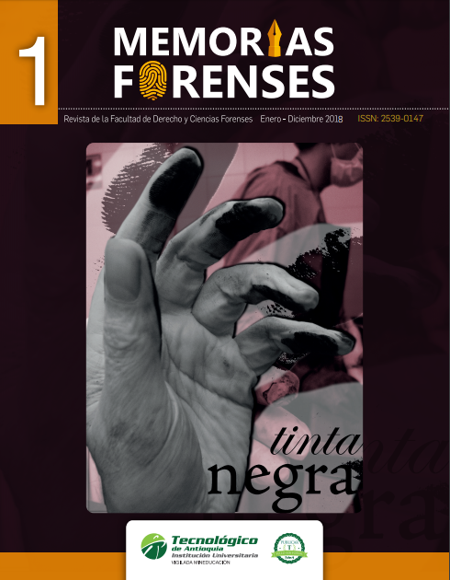Cadmio en leche materna: Revisión sistemática de la literatura
Cadmium in breast milk: Systematic review of the literature
Contenido principal del artículo
Resumen
Descargas
Detalles del artículo
Referencias (VER)
Abballe, A., Ballard, T. J., Dellatte, E., di Domenico, A., Ferri, F., Fulgenzi, A. R., €¦ De Felip, E. (2008). Persistent environmental contaminants in human milk: concentrations and time trends in Italy. Chemosphere, 73(1 Suppl),
S220-227. https://doi.org/10.1016/j.chemosphere.2007.12.036
Agency for Toxic Substances and Disease Registry. Toxicological 5. Profile for cadmium. Atlanta: ATSDR; 1999. (s. f.).
Al-Saleh, I., Shinwari, N., & Mashhour, A. (2003). Heavy metal concentrations in the breast milk of Saudi women. Biological Trace Element Research, 96(1-3),
-37. https://doi.org/10.1385/BTER:96:1-3:21
Counter, S. A., Buchanan, L. H., Ortega, F., Chiriboga, R., Correa, R., & Collaguaso, M. A. (2014). Lead levels in the breast milk of nursing andean mothers living in a lead-contaminated environment. Journal of Toxicology and Environmental Health. Part A, 77(17), 993-1003. https://doi.org/10.1080/15287394.2014.897281
Domellöf, M., Cohen, R. J., Dewey, K. G., Hernell, O., Rivera, L. L., & Lönnerdal, B. (2001). Iron supplementation of breast-fed Honduran and Swedish infants from 4 to 9 months of age. The Journal of Pediatrics, 138(5),
-687. https://doi.org/10.1067/mpd.2001.112895
Evaluation and Determination of Heavy Metals (Mercury, Lead and Cadmium) in Human Breast Milk Evaluation and Determination of Heavy Metals (Mercury, Lead and Cadmium) in Human Breast Milk - e3sconf_ichmet2013_41037.pdf. (s. f.). Recuperado a partir de http://www.e3s-conferences.org/articles/e3sconf/pdf/2013/01/e3sconf_ichmet2013_41037.pdf
García-Esquinas, E., Pérez-Gómez, B., Fernández, M. A., Pérez-Meixeira, A. M., Gil, E., de Paz, C., €¦ Aragonés, N. (2011). Mercury, lead and cadmium in human milk in relation to diet, lifestyle habits and sociodemographic variables in Madrid (Spain). Chemosphere, 85(2), 268-276. https://doi.org/10.1016/j.chemosphere.2011.05.029
Gonçalves, J. R., Mesquita, A. J. de, & Gonçalves, R. M. (2008). Determinação de metais pesados em leite integral bovino pasteurizado no estado de Goiás. Ciéncia Animal Brasileira, 9(2), 365-374.
Gonçalves, R. M., Gonçalves, J. R., & Fornés, N. S. (2010). [Cadmium in human milk: concentration and relation with the lifestyle of women in the puerperium period]. Revista Brasileira De Ginecologia E Obstetricia: Revista Da Federacao Brasileira Das Sociedades De Ginecologia E Obstetricia, 32(7), 340-345.
Grandjean, P., Weihe, P., Needham, L. L., Burse, V. W., Patterson, D. G., Sampson, E. J., €¦ Vahter, M. (1995). Relation of a seafood diet to mercury, selenium, arsenic, and polychlorinated biphenyl and other organochlorine concentrations in human milk. Environmental Research, 71(1), 29-38. https://doi.org/10.1006/enrs.1995.1064
Honda, R., Tawara, K., Nishijo, M., Nakagawa, H., Tanebe, K., & Saito, S. (2003). Cadmium exposure and trace elements in human breast milk. Toxicology, 186(3), 255-259. https://doi.org/10.1016/S0300-483X(03)00002-7
Järup, L., & Akesson, A. (2009). Current status of cadmium as an environmental health problem. Toxicology and Applied Pharmacology, 238(3), 201-208. https://doi.org/10.1016/j.taap.2009.04.020
Jensen, T. K., Grandjean, P., Jørgensen, E. B., White, R. F., Debes, F., & Weihe, P. (2005). Effects of breast feeding on neuropsychological development in a community with methylmercury exposure from seafood. Journal of Exposure Analysis and Environmental Epidemiology, 15(5), 423-430. https://doi.org/10.1038/sj.jea.7500420
Kippler, M., Hossain, M. B., Lindh, C., Moore, S. E., Kabir, I., Vahter, M., & Broberg, K. (2012). Early life low-level cadmium exposure is positively associated with increased oxidative stress. Environmental Research, 112, 164-170.
https://doi.org/10.1016/j.envres.2011.11.012
Leotsinidis, M., Alexopoulos, A., & Kostopoulou-Farri, E. (2005). Toxic and essential trace elements in human milk from Greek lactating women: Association with dietary habits and other factors. Chemosphere, 61(2),
-247. https://doi.org/10.1016/j.chemosphere.2005.01.084
Marques, R. C., Dórea, J. G., Bernardi, J. V. E., Bastos, W. R., & Malm, O. (2009). Prenatal and postnatal mercury exposure, breastfeeding and neurodevelopment during the first 5 years. Cognitive and Behavioral Neurology: Official Journal of the Society for Behavioral and Cognitive Neurology, 22(2), 134-141. https://doi.org/10.1097/WNN.0b013e3181a72248
Olsson, I.-M., Bensryd, I., Lundh, T., Ottosson, H., Skerfving, S., & Oskarsson, A. (2002). Cadmium in blood and urine--impact of sex, age, dietary intake, iron status, and former smoking--association of renal effects. Environmental Health Perspectives, 110(12), 1185-1190.
Örün, E., Yalçın, S. S., Aykut, O., Orhan, G., Morgil, G. K., Yurdakök, K., & Uzun, R. (2011). Breast milk lead and cadmium levels from suburban areas of Ankara. The Science of the Total Environment, 409(13),
-2472. https://doi.org/10.1016/j.scitotenv.2011.02.035
Oskarsson, A., Palminger Hallén, I., Sundberg, J., & Petersson Grawé, K. (1998). Risk assessment in relation to neonatal metal exposure. The Analyst, 123(1), 19-23.
Rahimi, E., Hashemi, M., & Baghbadorani, Z. T. (2009). Determination of cadmium and lead in human milk. International Journal of Environmental Science & Technology, 6(4) 671-676. https://doi.org/10.1007/BF03326108
Schoeters, G., Den Hond, E., Zuurbier, M., Naginiene, R., van den Hazel, P., Stilianakis, N., €¦ Koppe, J. G. (2006). Cadmium and children: exposure and health effects. Acta Paediatrica (Oslo, Norway: 1992). Supplement, 95(453),
-54. https://doi.org/10.1080/08035320600886232
Winiarska-Mieczan, A. (2014). Cadmium, Lead, Copper and Zinc in Breast Milk in Poland. Biological Trace Element Research, 157(1), 36-44. https://doi.org/10.1007/s12011-013-9870-x










